p+p collisions at 200GeV
Results from 1D HBT study in p+p@200GeV
Results from 3D HBT study in p+p@200GeV
d+Au collisions at 200GeV
You do not have access to view this node
Target journal: PRC
PAs: Zbigniew Chajecki and Mike Lisa
The STAR Collaboration has measured two-pion correlation functions from p+p and d+Au collisions at 200 GeV at RHIC. Spatial scales are extracted via a femtoscopic analysis of the correlations, though this analysis is complicated by the presence of strong non-femtoscopic correlations.
Our results are put into the context of the world dataset of femtoscopy in hadron-hadron and $e^+-e^-$ collisions. For the first time, STAR can directly compare results from heavy-ion and p+p collisions, under identical analysis and detector conditions. We find the kinematic and multiplicity systematics of geometrical scales in these systems to be surprisingly similar. Based on this and additional similarities in the single-particle spectra, we speculate on the possibility of a bulk, collective system created in p+p collisions at RHIC.

Fig 1 Two-pion correlation function from low-multiplicity d+Au collisions. Left panels: one-dimensional projections of the 3-D correlation function in the Bertsch-Pratt components qout, qside, qlong.
Right panels: Spherical harmonic moments of the correlation function with l=0,2. (C.f. our paper on this.) Lines represent fits to the correlation function, assuming a Gaussian emission source and only femtoscopic correlations.
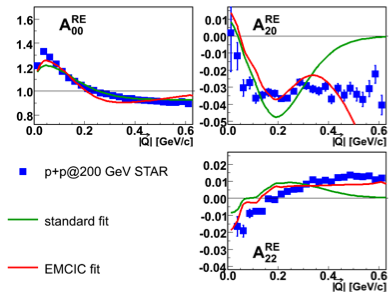
Fig 2 Spherical harmonics of the two-pion correlation function from minimum-bias p+p collisions. Curves represent fits using several parameterizations.




Fit results:
p+p collisions at 200GeV
Results from 1D HBT study in p+p@200GeV
Results from 3D HBT study in p+p@200GeV
d+Au collisions at 200GeV
You do not have access to view this node
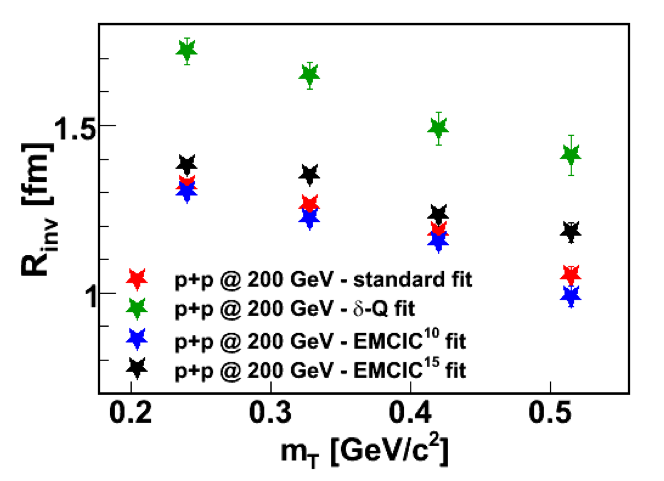
Fig 3 One dimensional HBT radii from p+p collisions, extracted via various fitting forms.

Fig 4 One dimensional HBT radii from p+p collisions, extracted via various fitting forms.
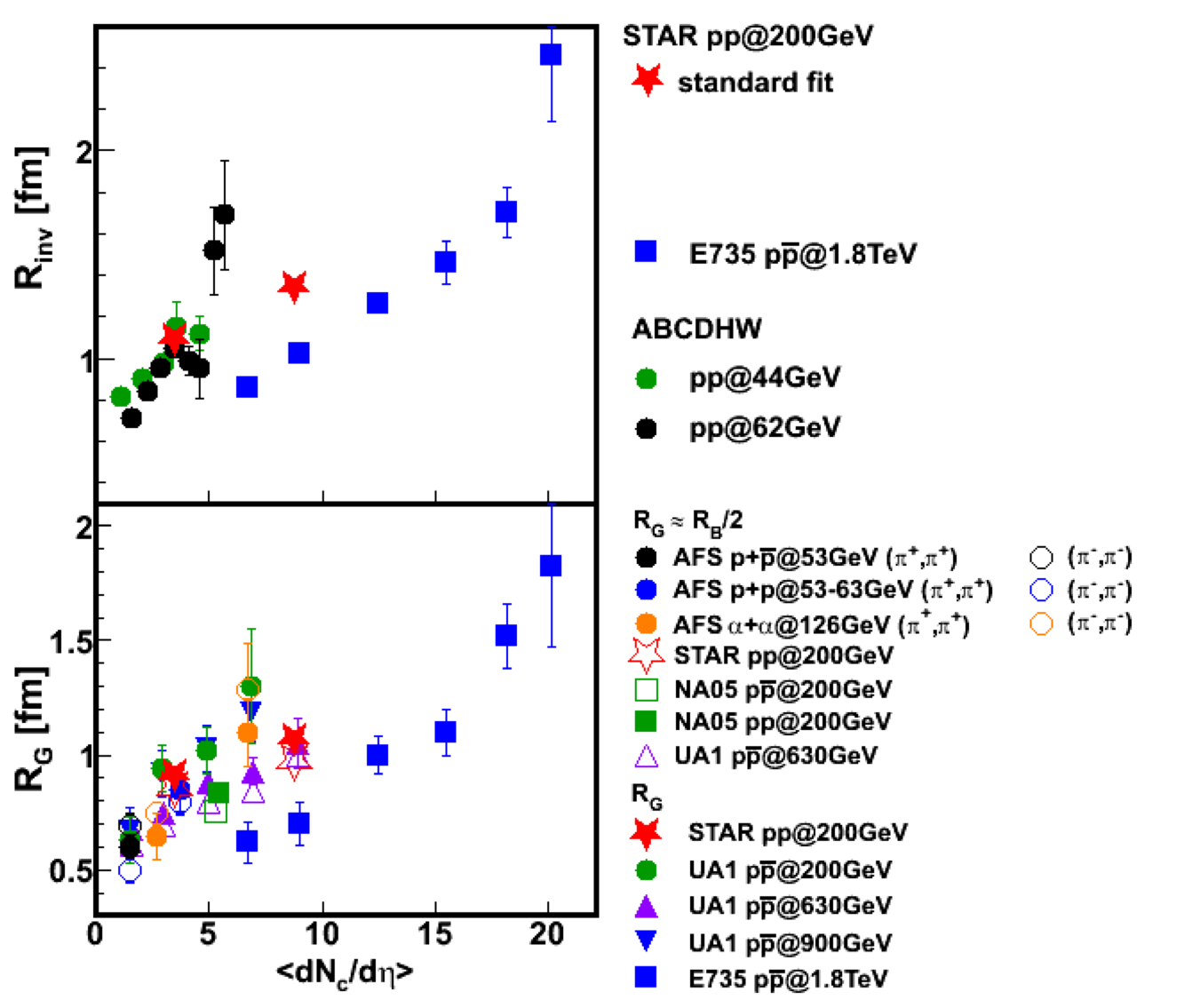
Fig 5 Multiplicity dependence of one-dimensional "HBT radii" measured by STAR, compared to previous p+p, p+pbar measurements at SPS and Tevatron. Only collisions with sqrt(s)>40 GeV are shown; at lower energies, there are contradictory claims of a multipicity dependence.
Since various experiments use different parameterizations and techniques, and have differing acceptaces, only trends should be compared.
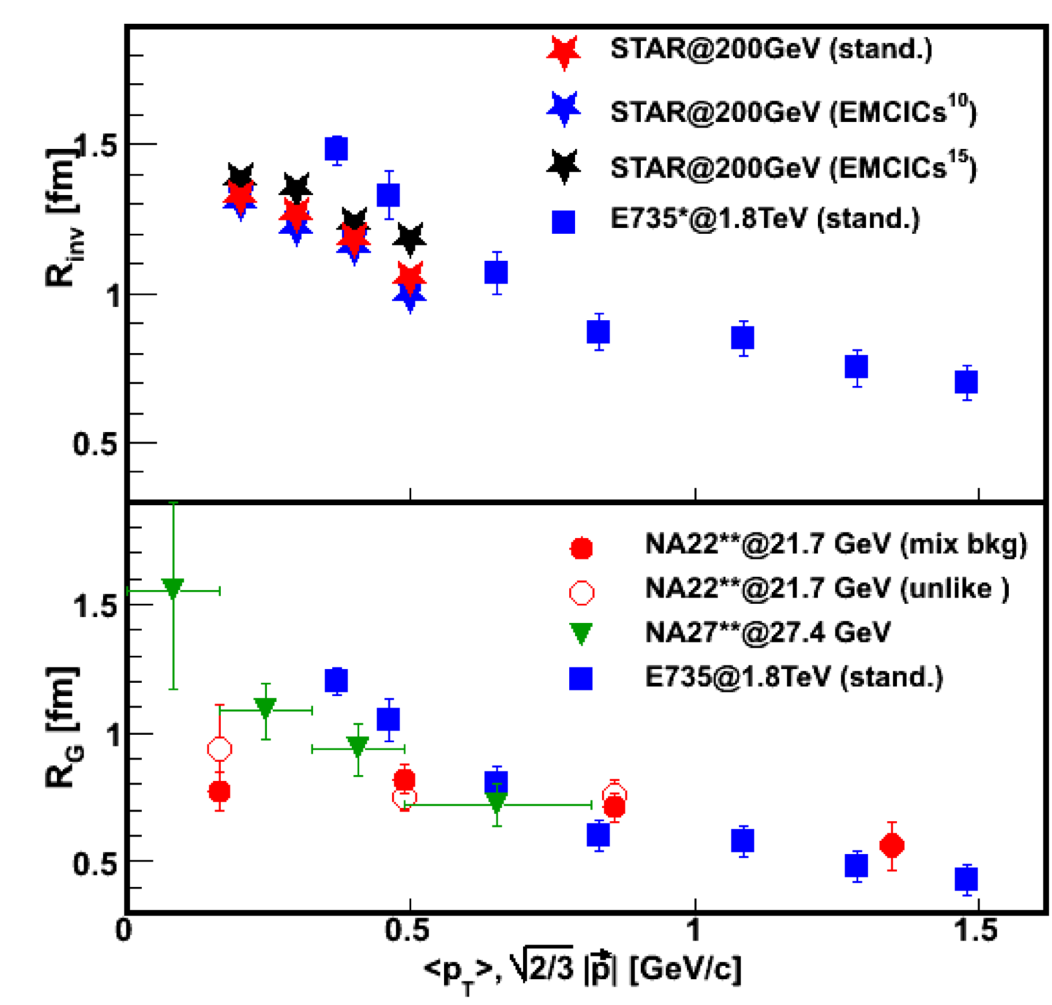
Fig 6 Transverse momentum dependence of one-dimensional "HBT radii" measured by STAR, compared to previous p+p, p+pbar measurements at SPS and Tevatron. Only collisions with sqrt(s)>40 GeV are shown; at lower energies, there are contradictory claims of a multipicity dependence.
Since various experiments use different parameterizations and techniques, and have differing acceptaces, only trends should be compared.
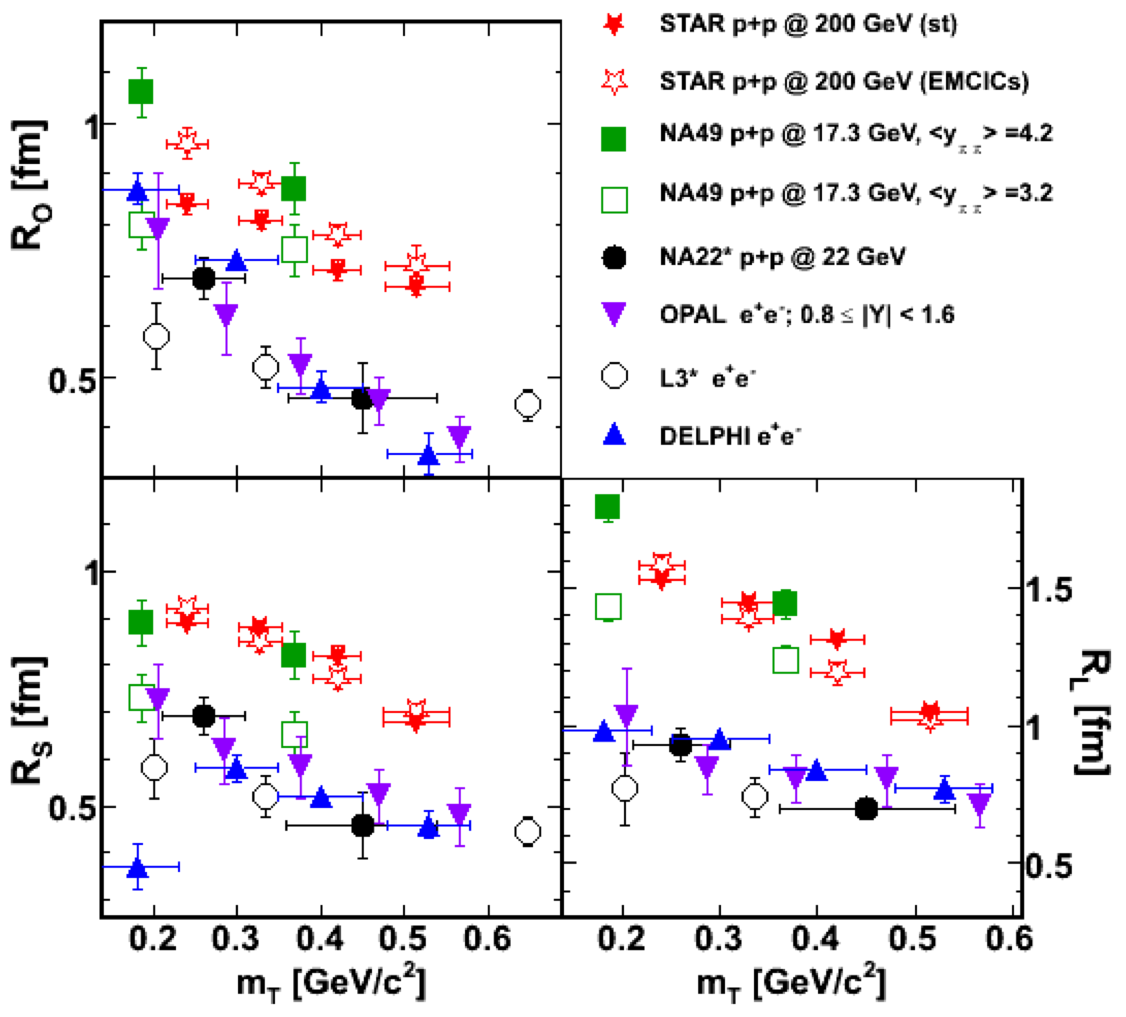
Fig 7 Transverse momentum dependence of three-dimensional "HBT radii" measured by STAR, compared to previous p+p, p+pbar, and e+e measurements at SPS, Tevatron and LEP.
Since various experiments use different parameterizations and techniques, and have differing acceptaces, only trends should be compared.
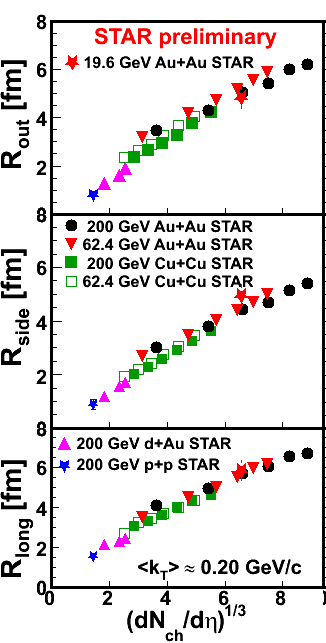
Fig 8 The multiplicity-dependence of three-dimensional HBT radii measured in the STAR detector at RHIC, for various systems.
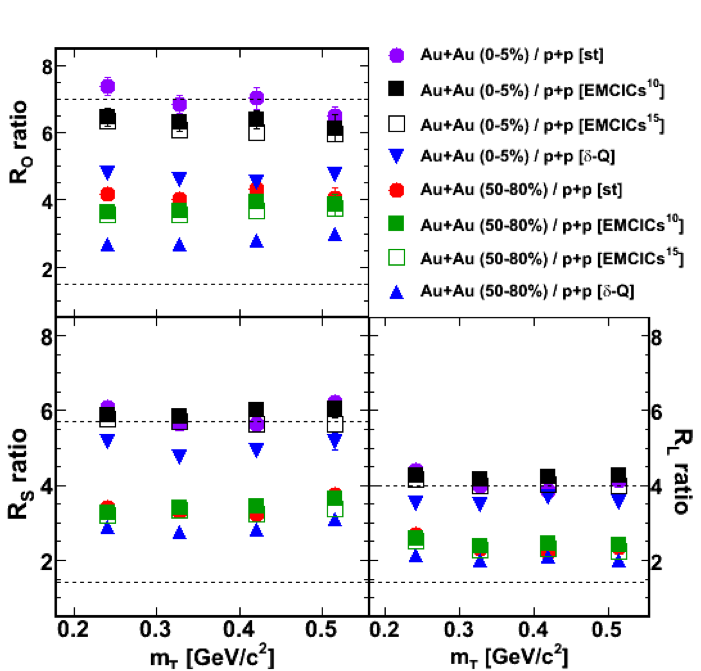
Fig 9 Ratios of HBT radii measured in central and mid-central Au+Au collisions, with those from p+p collisions. The radii from p+p collisions were extracted with various fit functions. Dashed lines misguide the eye.
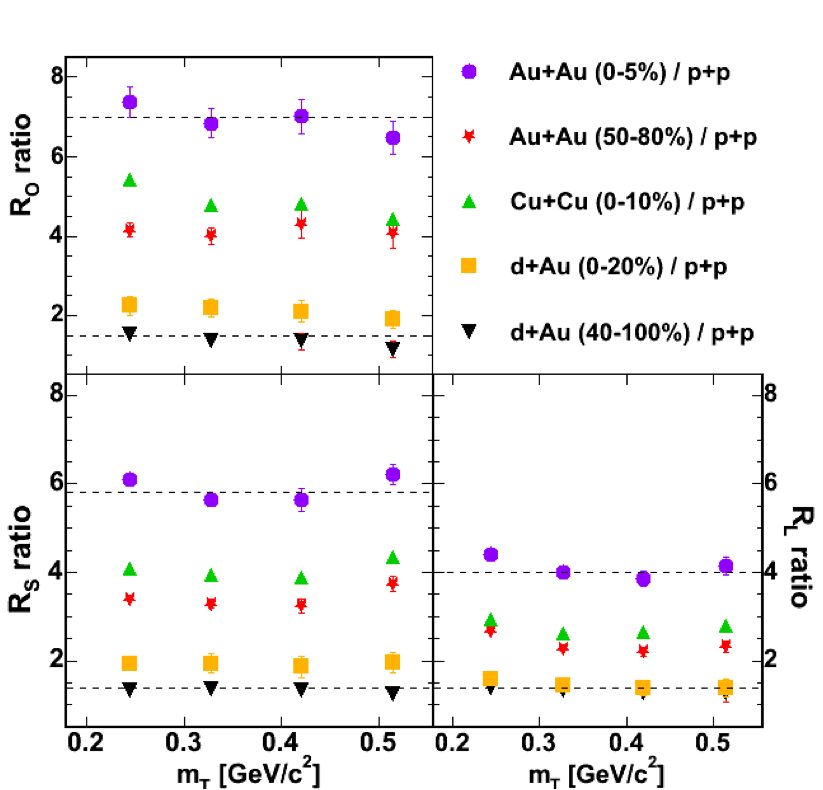
Fig 10 Ratios of HBT radii measured in heavy ion collisions with those from p+p collisions. The radii from p+p collisions were extracted with fits including EMCICs. Dashed lines misguide the eye.

Fig 11 Blast-wave calculations of HBT radii, using temperature and flow parameters extracted from "EMCIC-corrected" pT spectra for p, K, π measured in p+p collisions by STAR (c.f. our recent paper on this)
We have presented a systematic femtoscopic analysis of two-pion correlation functions from p+p and d+Au collisions at RHIC. In addition to femtoscopic correlations, the correlation functions show correlations due to energy and momentum conservation. Such effects have been observed previously in low-multiplicity measurements at Tevatron, SPS, and elsewhere. They have either been ignored, or treated with various semi-justified functional forms. We have used several such forms, as well as a recently-developed formalism to account for conservation-law-induced correlations. While the overall magnitude of the geometric scales ("HBT radii") vary with the method, the important systematics do not.
In particular, we observe a significant positive correlation between the one- and three-dimensional and the multiplicity of the collision. Negative correlations are observed between the radii and the pion transverse momentum. Qualitatively, similar multiplicity and momentum systematics have been observed previously in measurements of hadron and electron collisions at the Sp$\overline{\rm p}$S, Tevatron, ISR and LEP. However, the results from these experiments could not be directly compared to those from heavy ion collisions, due to differences in techniques, fitting methods, and acceptance.
Thus, our measurement in STAR has provided a unique possibility for an apples-to-apples comparison of femtoscopy in p+p and A+A collisions. This is crucial, since in the latter case, the pT systematics have provided the most compelling evidence for collective flow in heavy ion collisions at RHIC. We have seen an identical pT scaling of the femtoscopic scales in p+p as in A+A collisions, independent of the fitting method employed. This raises the provocative possibility that proton collisions form a bulk collective system similar to-- albeit smaller than-- that created in heavy ion collisions. Indeed, simultaneously fitting the HBT radii and pT spectra (after accounting for the same conservation law-induced effects as seen in the 2-particle correlations) with a blast-wave ansatz, indicates an emitting source with strong flow and low temperatures, as observed in A+A collisions at RHIC.
Further study on the soft aspects of p+p collisions is warranted. The similarities observed could indicate a deep connection of the underlying bulk physics driving systems much larger than-- and on the order of-- the confinement scale. At the Large Hadron Collider, similar apples-to-apples comparisons will be possible, and the much higher energies available will render conservation law-driven effects less problematic.